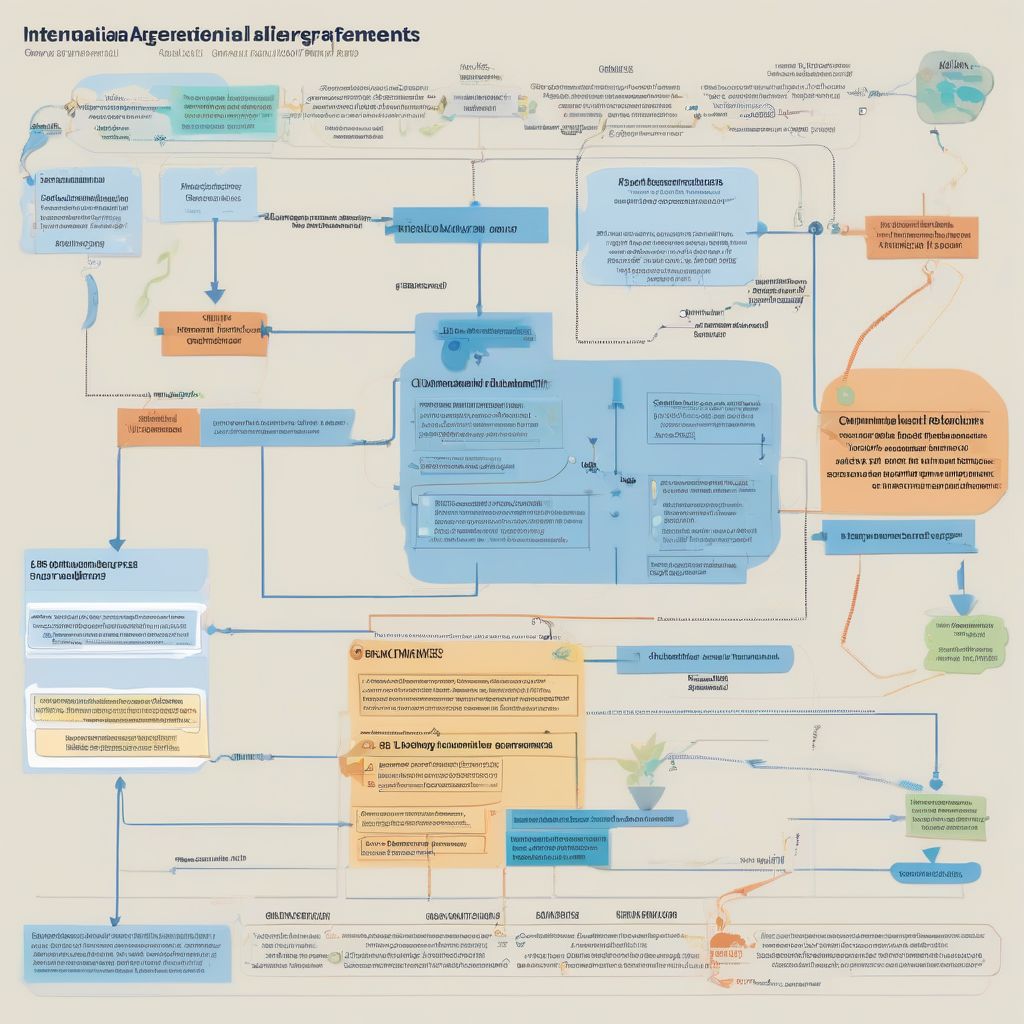Imagine a world where clean energy powers our homes, fuels our transportation, and drives our industries. This isn’t a utopian dream, but a potential reality shaped by international climate agreements. These agreements, often complex and multifaceted, play a crucial role in reshaping global energy policy. They set targets, establish frameworks, and incentivize nations to transition towards sustainable energy sources, impacting everything from the cars we drive to the electricity that powers our lives. So, how exactly do these agreements influence the complex world of energy policy? Let’s delve in.
The Ripple Effect of International Climate Agreements
International climate agreements, like the Paris Agreement, serve as a catalyst for change in national energy policies. They create a sense of urgency and a shared global commitment to address climate change, compelling nations to re-evaluate their energy mix and invest in cleaner alternatives. This isn’t merely about reducing greenhouse gas emissions; it’s about fostering innovation, creating economic opportunities, and ensuring a sustainable future for generations to come.
Setting Targets and Driving Ambition
A key function of these agreements is establishing emission reduction targets. These targets, though often debated and negotiated, provide a quantifiable objective for nations to strive towards. They incentivize countries to develop and implement policies that promote renewable energy, enhance energy efficiency, and phase out fossil fuels. The Paris Agreement, for instance, aims to limit global warming to well below 2 degrees Celsius, preferably to 1.5 degrees Celsius, compared to pre-industrial levels. This ambitious goal requires a significant shift in energy production and consumption patterns worldwide.
Fostering International Cooperation and Collaboration
Climate change is a global challenge requiring global solutions. International agreements facilitate cooperation between countries, enabling the sharing of best practices, technologies, and financial resources. This collaboration can accelerate the development and deployment of clean energy technologies, fostering a global market for renewable energy solutions. For example, the International Solar Alliance, launched under the Paris Agreement framework, aims to promote solar energy deployment in sun-rich countries.
Creating Market Mechanisms and Incentives
International agreements can also create market mechanisms that drive investment in clean energy. Carbon pricing mechanisms, such as carbon taxes or emissions trading schemes, can internalize the cost of carbon emissions, making fossil fuels less competitive and incentivizing the adoption of renewable energy sources. The European Union Emissions Trading System (EU ETS) is a prime example of a large-scale carbon market that has influenced energy policy across Europe.
Promoting Transparency and Accountability
Transparency and accountability are essential elements of effective climate action. International agreements often include reporting requirements and review mechanisms that ensure nations are making progress towards their commitments. This transparency can help build trust and encourage greater ambition over time. The Enhanced Transparency Framework under the Paris Agreement, for instance, establishes standardized reporting guidelines for greenhouse gas emissions and climate action.
From Global Agreements to National Action: Translating Commitments into Policy
The impact of international climate agreements extends beyond the global stage, directly influencing national energy policies. Countries translate their international commitments into concrete actions at the domestic level, shaping energy regulations, investment decisions, and technology development.
Regulatory Frameworks and Policy Instruments
Governments employ a range of policy instruments to achieve their climate and energy goals. These include renewable portfolio standards, which mandate a certain percentage of electricity generation from renewable sources, feed-in tariffs, which provide guaranteed prices for renewable energy, and energy efficiency standards for buildings and appliances. The specific policies adopted vary depending on a country’s unique circumstances and energy mix.
Investment in Research and Development
International agreements can stimulate investment in clean energy research and development. Recognizing the need for technological innovation to achieve ambitious climate targets, governments and private sector actors are increasing funding for research into renewable energy technologies, energy storage solutions, and carbon capture and storage.
Public Awareness and Behavior Change
International agreements can also raise public awareness about climate change and the importance of transitioning to sustainable energy. This increased awareness can lead to shifts in consumer behavior, with individuals making more conscious choices about their energy consumption, opting for energy-efficient appliances, and supporting renewable energy initiatives.
 International Climate Agreements Impact on Energy Policy
International Climate Agreements Impact on Energy Policy
Challenges and Opportunities
While international climate agreements hold immense potential, they also face several challenges. Negotiating ambitious targets, ensuring equitable burden-sharing, and addressing the needs of developing countries are ongoing challenges. However, these agreements also present significant opportunities for economic growth, job creation, and improved public health. The transition to a clean energy future can drive innovation, create new industries, and improve air quality, leading to a healthier and more prosperous future for all.
Conclusion
International climate agreements are pivotal in shaping global and national energy policies. By setting targets, fostering collaboration, and creating market mechanisms, they drive the transition towards sustainable energy sources. While challenges remain, these agreements offer a pathway towards a cleaner, more resilient, and prosperous future. It’s a future powered by innovation, collaboration, and a shared commitment to protecting our planet. What are your thoughts on how international climate agreements can further accelerate the clean energy transition? Share your insights in the comments below! Let’s continue this conversation and work together towards a sustainable energy future.



